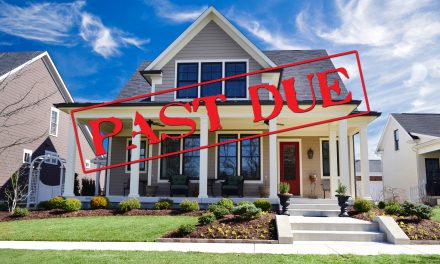A recent survey of housing experts by Zillow reports that over 60% of housing experts believe rent control does more harm than good. 30% said rent control may be useful in a crisis as a last resort, but not in a normal housing market. Only 2% said rent control is an effective solution in a normal housing market.
The issue of rent control is most pertinent in today’s rental housing market — especially in California. Demand for rentals is high and new multi-family housing construction is rising, but at a snail’s pace. This has led to rents escalating well beyond renter incomes. In turn, renters are unable to save or spend as much of their income, bad for future home sales and economic performance.
The following California cities have rent control laws:
- Berkeley;
- Beverly Hills;
- Campbell;
- East Palo Alto;
- Fremont;
- Hayward;
- Los Angeles;
- Los Gatos;
- Oakland;
- Palm Springs;
- San Francisco;
- San Jose;
- Santa Monica;
- Thousand Oaks; and
- West Hollywood.
Specific rent control laws vary by city. Some cities only limit increases in rent (usually to about the rate of inflation) and others also restrict cases in which a tenant may be evicted.
The best of intentions
Rent control is meant to keep rents from rising beyond the financial abilities of long-term tenants. In theory, this creates more stable neighborhoods since tenants won’t be constantly forced out due to rapidly rising rents. Furthermore, a more stable neighborhood is a nicer one to live in; tenants take care of their homes and a sense of ownership keeps the community cleaner and safer (though landlords restricted by rent control laws have less incentive to maintain properties, a disadvantage).
However, neighborhood stability and economic growth do not go hand in hand. Rent control is in essence the government’s answer to the controversial topic of gentrification. In a gentrifying neighborhood, wealthy residents move into a depreciating community, buy up properties and build hipster coffee shops. In turn, property values rise and neighborhood desirability improves (think: San Francisco’s Mission District). At the same time, long-time residents are forced out, onto the streets or into far flung suburbs.
There’s no doubt about it, gentrification is good for local economic development. However, essentially forcing out families in the name of economic growth leaves a bad taste in one’s mouth.
Rent control doesn’t even work
Enter rent control.
Rent control is the government’s way of keeping long-term tenants in the neighborhood. However, this arrangement makes a perversion of the landlord/tenant relationship.
Unlike landlords of units not under rent control, the landlord of a rent-controlled apartment is, with rare exception, constantly hoping their tenant will move out. Sometimes they help the process along.
The temptation to evict a tenant from a rent-controlled apartment stems from the fact a new tenant allows the rent to reset (and thus rise). In times of high demand, it’s tempting for landlords to encourage their tenants to leave by various means so they can legally demand higher rents from new tenants. To do this, landlords may limit property maintenance to the bare minimum required by law, since the landlord’s investment won’t be returned by the improvements.
In other cases, landlords attempt to scoot around the law by casually mentioning to their tenant they plan on occupying the tenant’s unit at the end of their lease. While this is allowed, landlords have been known to abuse this loophole. When the tenant moves out “voluntarily,” the landlord doesn’t move in (they don’t have to, since their plans weren’t recorded in an official eviction notice) and then the landlord is free to raise the rent on the next tenant.
If all else fails, bribing tenants to leave has also been known to work.
This behavior makes rent control pretty pointless for tenants. It makes enemies of landlord and tenant, and the reasons are understandable.
On top of the landlord abuses, the main critique of rent control is that limiting the amount of rent landlords can charge removes the motivation for more rental units to be built in the area. In turn, the supply of rental housing becomes limited due to lack of builder incentives. Then, rents rise excessively for all other non-rent controlled apartments.
However, California does not impose rent control laws on new construction, codified in the Costa-Hawkins Act of 1995. [Calif. Civil Code §1954.50-535]
So why is it still so expensive to rent in cities like San Francisco and Los Angeles?
It all comes back to overly restrictive zoning.
Fix the zoning
The good news is, cities can have their proverbial cake and eat it too.
City planners can adjust local zoning regulations near desirable or up-and-coming areas to allow for more multi-family housing to be built. This works well on two levels:
- More housing units meets excess demand and organically keeps rents from escalating beyond the reach of long-term neighborhood residents.
- More residents moving to the area is a boon to local businesses and encourages new commercial growth.
Zoning is enacted on an extremely local scale. Thus, a few vocal community members (called NIMBYs, or “not in my backyard” advocates) can make the difference between new multi-family units being built and not. When housing demand isn’t met by new construction, property values and the price of rents skyrocket. Long-time residents are forced out. Alternatively, residents stay and become house poor, unable to contribute to the local economy beyond their exorbitant housing payments.
Check out these organizations making positive zoning change at the local level and get involved.















Too bad the photo is of a street in Texas! :)
Wanda,
The photo actually shows a street in San Francisco, though we do understand why that may have been unclear due to the flag in the corner of the photo.
Thank you for your comment!
Regards,
ft Editorial Staff